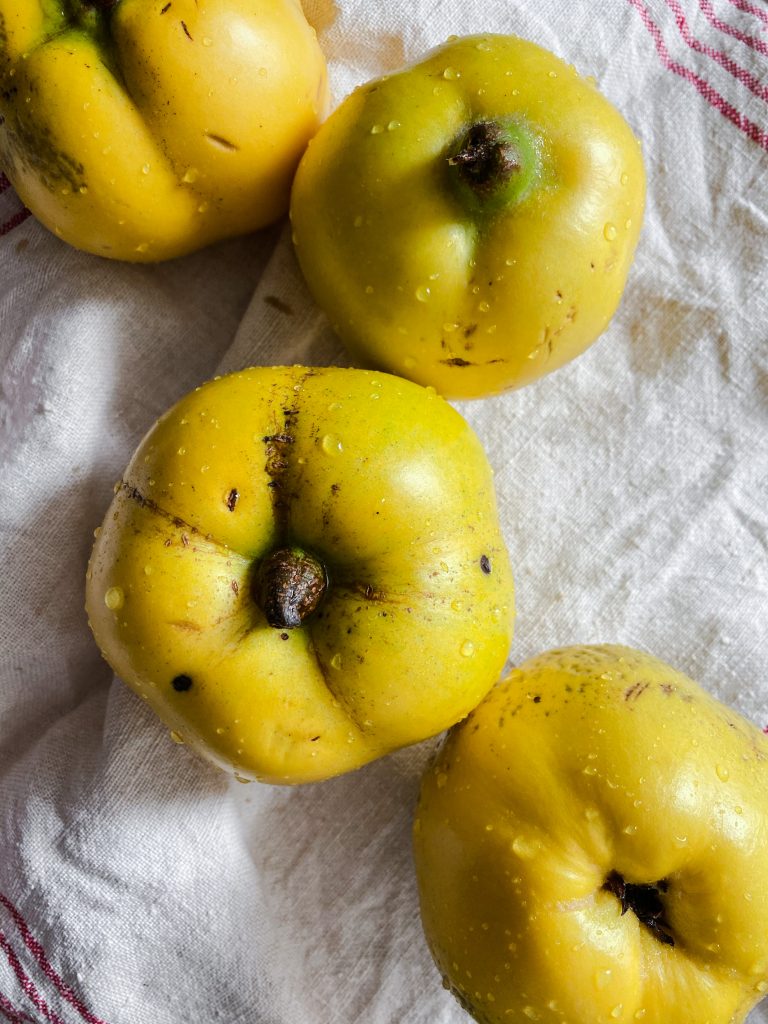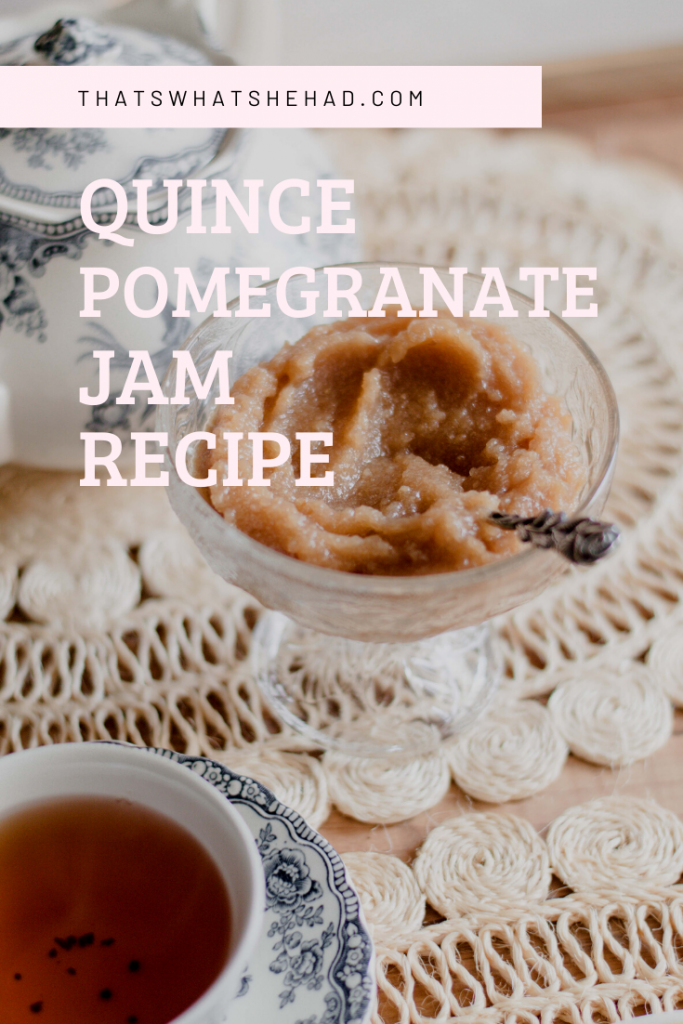Nothing can prepare you for the robust grainy flesh of quinces hiding behind the innocent bright yellow exterior. A quince might look like a huge apple or “a pregnant pear”, as Bee Wilson, a British food writer, describes it, but try biting into it and you’ll quickly learn that in terms of texture and flavor it holds its own.
In her book “Cook, eat, repeat”, Nigella Lawson gives this brilliant description to quinces:
“The last time I cooked these, I was trying to explain what they were to someone who’d never come across a quince before, and I said he should think of them as a cross between a parsnip and a pear. This makes no sense botanically, but it conjures up the sweet graininess of their flesh, even if it misses the sharpness that is just as much an essential part of what they bring.”
This quince pomegranate jam is, in fact, largely inspired by Nigella’s pomegranate-poached quinces from the same book. It would also never happen, were it not for an epic failure of Ottolenghi’s lamb-stuffed quinces.
The story goes like this. Whenever I see a stranger of a vegetable or fruit at the market, without the slightest idea of what I am going to do with it, I put it in the basket. Scarlett O’Hara’s “I’ll think of it tomorrow” is my motto. Sometimes, I don’t even know its name. Now, that might sound almost like a vegetable version of a one-night stand, but, I promise you, many delicious friendships were born out of such reckless actions.
I got quinces the same way. They looked similar enough to apples to give me a false sense of confidence. An apple I can cook alright. I found a recipe for lamb-stuffed quinces in Ottolenghi’s Jerusalem and set out to make it on a weekday, at lunch, while looking after my eleven-month old. Do you sense the impending disaster?
Everything that could go wrong did. I bent a vegetable peeler trying to core the quinces; the flesh browned before my eyes when I peeled the skin off — not even water with lemon juice helped; and when I tried to hollow them out, the halves simply broke into pieces. I was not prepared for the resistance I met from the hard grainy flesh. I wish I could say that all of this trouble was worth it, but I had to throw out the whole dish, once cooked.
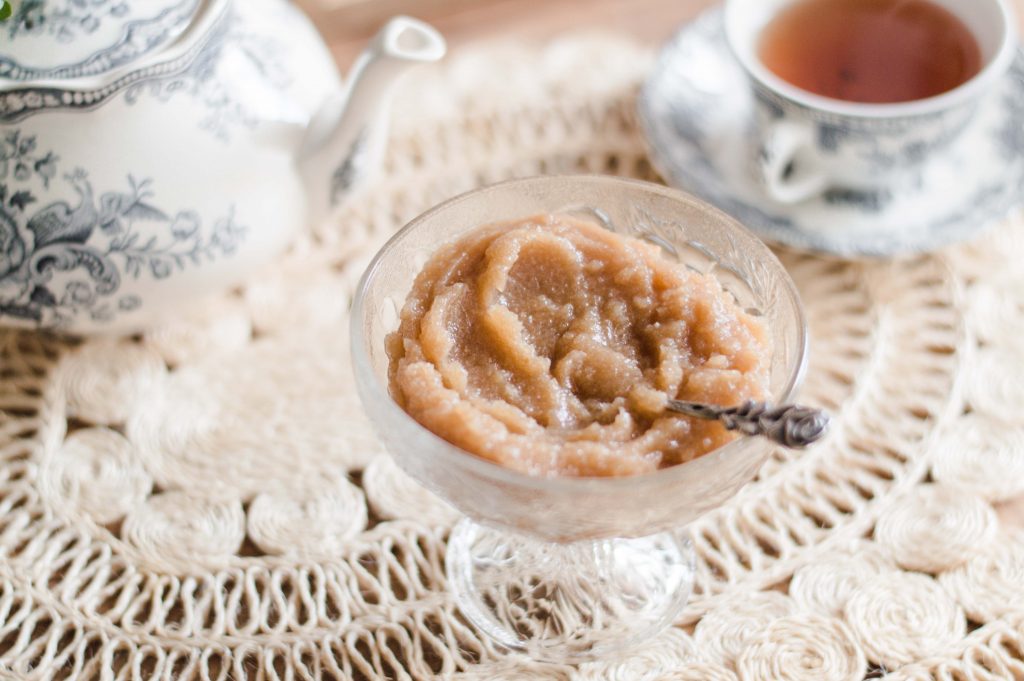
The problem was, I had another five quinces left. I had to summon all my courage to prepare them again. When in doubt about what to make with fruit —except of course for the obvious option of eating it raw, which is not at all an option when it comes to quinces — I make jam.
Jam is reliable. It is satisfying to know that with the right amount of sugar, heat, and time, any, even the most stubborn of fruits, will turn into something beautiful. Around the time when I was contemplating on how exactly to make quince jam, I bought Nigella’s new book, and what do you know, there’s not one, but two recipes for quinces in it.
The first one was roasted quinces with olive oil. The basic, simple recipe that is a great place to start if you’ve never held a quince in your hand in your entire life. In other words, a perfect recipe for me. I, however, was mesmerized by the other one — pomegranate-poached quinces.
To make them, you poach slices of quince in a mixture of water, pomegranate juice, and sugar for almost two hours. Then you take the quinces out and reduce the liquid to a thick syrup which you later pour over the poached quinces. Sprinkle with pomegranate seeds, et voila!
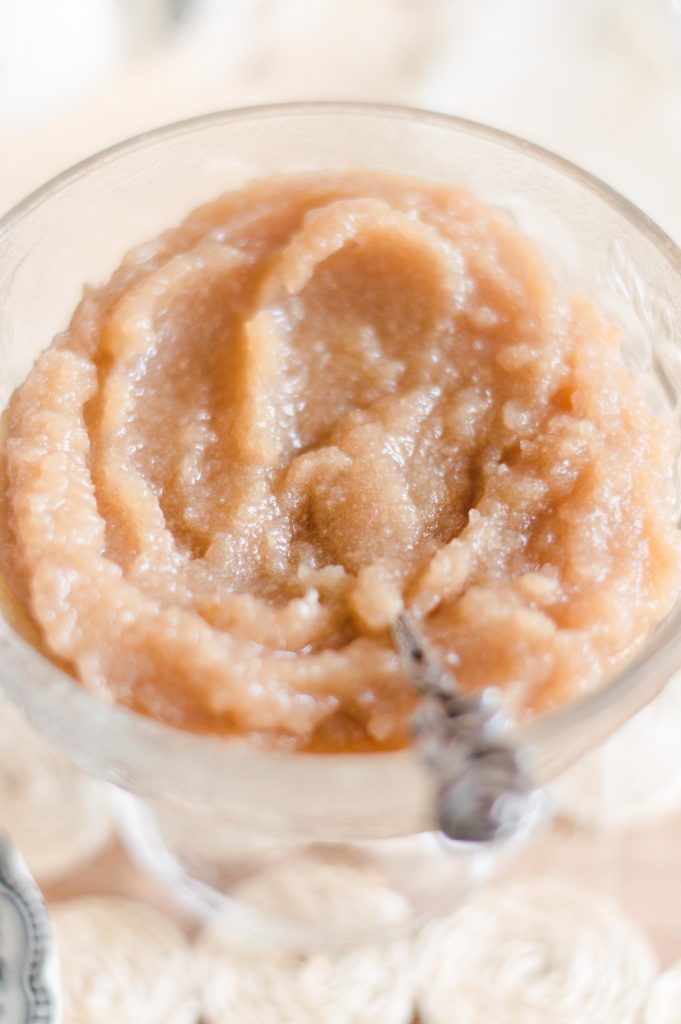
I was about to place my confidence in Nigella and poach the leftover quinces, when I realized I could have the best of both worlds: a quince jam as planned, but flavored with pomegranate juice and aromatics. The idea seemed so brilliant that 1. I couldn’t wait to get into kitchen and start cooking; 2. I couldn’t quite believe my luck with quinces would turn around and the jam would be at least decent, let alone delicious.
To my big surprise and almost childish joy, second time was a charm. I peeled, cored and diced the quinces as quickly as possible, fully aware that time worked against me. It took only half an hour of simmering quinces in pomegranate juice for them to turn soft.
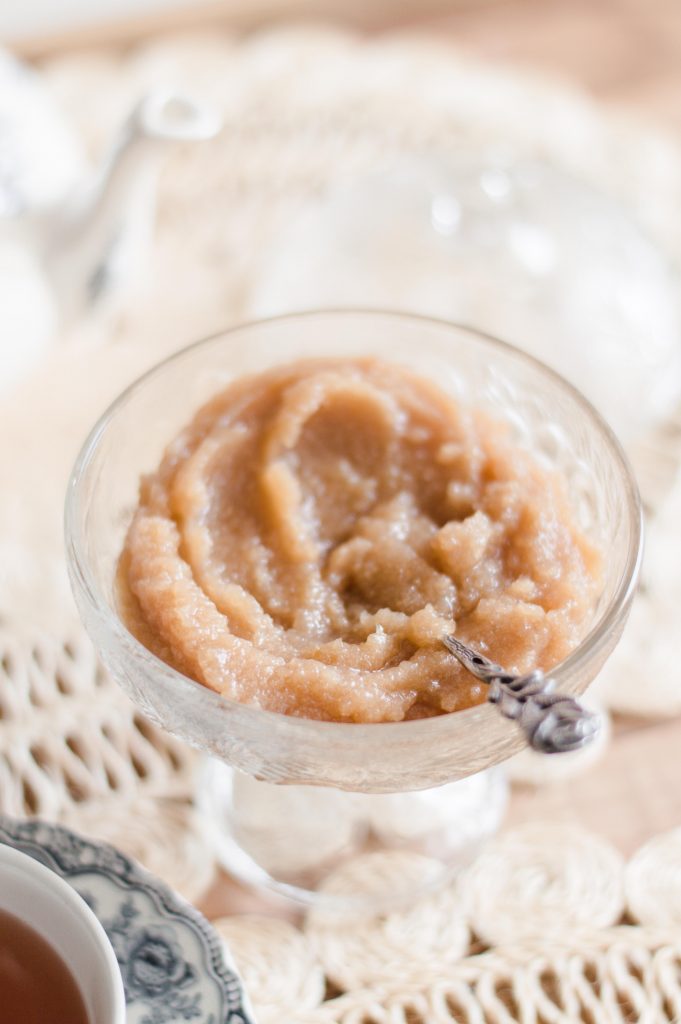
Then you let it cool, remove the aromatics, and blend the fruit and syrup into fine jam, that, in consistency, is much closer to apple sauce than actual jam. In Russian, I would call it povidlo, which is a kind of smooth jam, unlike vareniye, that has pieces of fruit in it.
As I put the first teaspoon of jam in my mouth, it felt like an explosion of flavors. Quinces, themselves, are incredibly fragrant and possess an “almost etherial aroma”, as per Nigella (I do love her writing a lot). Pomegranate juice adds a sharp fruity note, while thyme and bay leaf are responsible for the herbal, earthy tones.
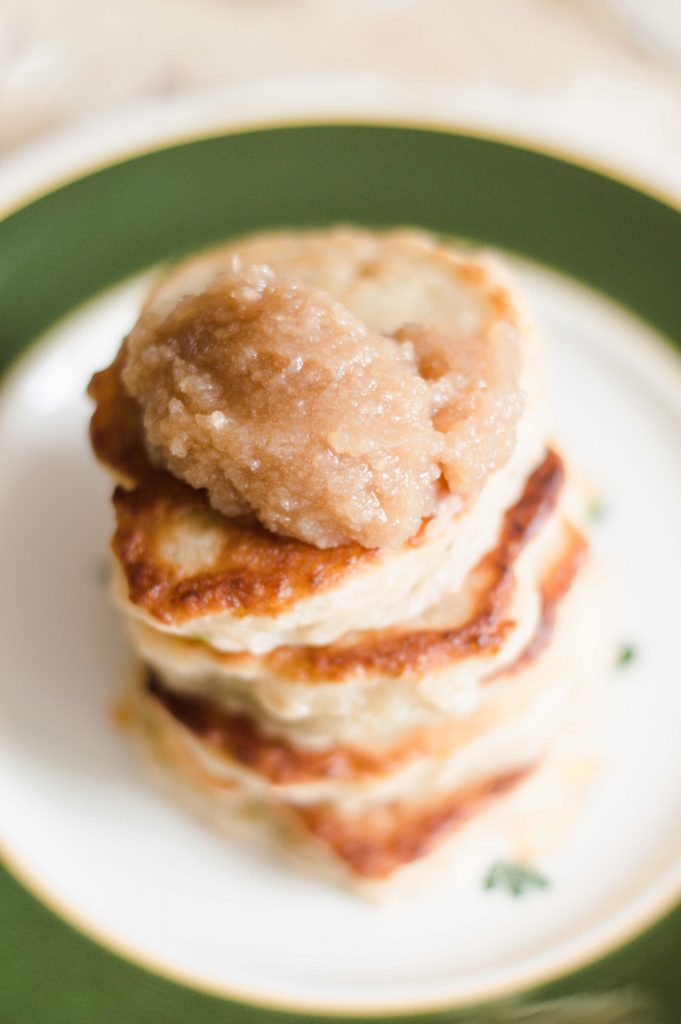
This quince and pomegranate jam is one of the most aromatic and beautifully balanced jams I have ever made. But behind all that flavor is hiding the slightest graininess. As if even the peeling, cutting, simmering, and blending could not make this stone-hard fruit submissive: the quince stands its ground and remains coarse even in the form of jam.
Quince Pomegranate Jam
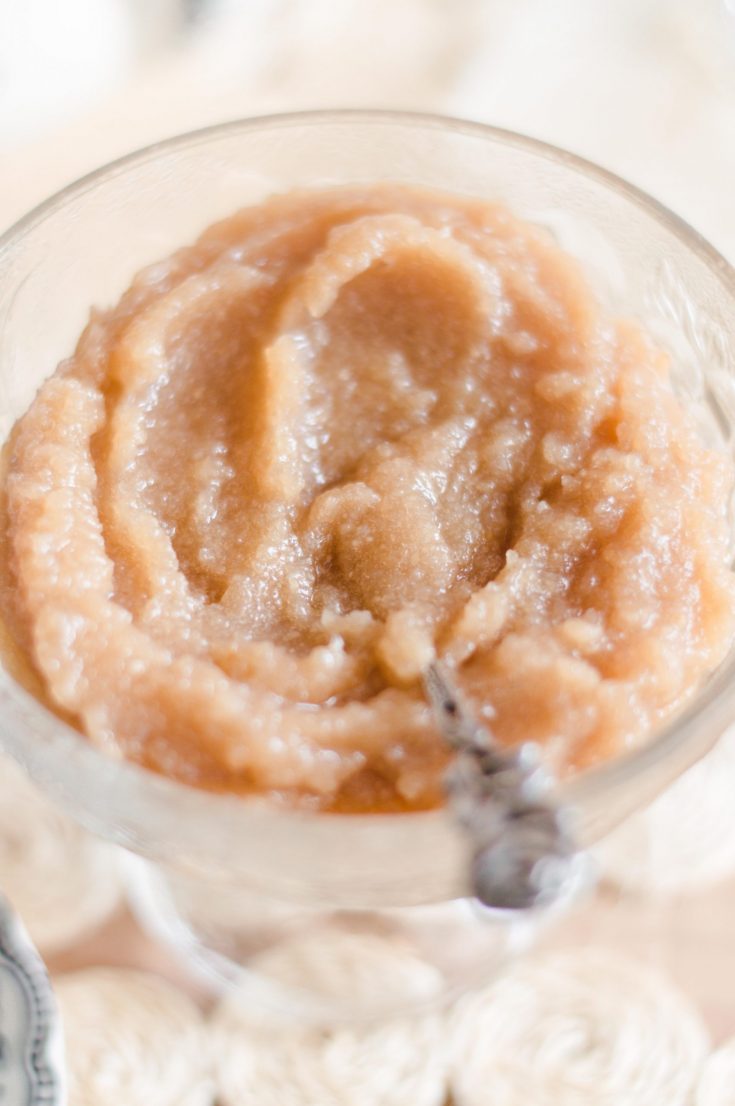
Jam of quinces and pomegranate juice with smooth (apple-sauce-like) texture
Ingredients
- 200 ml (1 cup + 2 tbsp) pomegranate juice
- 5 medium quinces (850 g/1,9 lb total weight, 620 g/1.4 lb after peeling and coring)
- 250 g (1cup + 2 tbsp) caster sugar
- 3 sprigs of thyme
- 2 bay leaves
Instructions
1. Pour pomegranate juice into a heavy-based pan, in which you are planning to make jam.
2. Wash quinces and remove the fuzz from their surface. Peel, quarter, core and dice one quince at a time (cubes with a side of approximately 1 cm/half an inch). Once the first quince is diced, place the cubes into the pan with pomegranate juice to avoid discoloration. Then proceed to the next quince. The juice won’t cover all of the fruit, and it’s ok. Just try to prep quinces as fast as possible, but work carefully, as the flesh is hard.
3. Add sugar, thyme and bay leaves to the pan and place it over medium heat. Bring the juice to simmer, then reduce the heat to low. Cover with a lid and let it simmer for 30 minutes. Mix the quinces once in a while to make sure all of them cook through. When the quinces are soft and you can easily prick them with a fork, they are ready.
4. Remove the pan from the heat and let it cool. Remove the thyme sprigs and bay leaves from the pan. Transfer quinces and juice to a blender and blend into a smooth jam. The consistency should be like that of applesauce.
5. Pour jam into clean jars and refrigerate. Sterilize the jars, if you want to keep the jam outside. I always give the jars a quick wash with boiling water before pouring the jam in, even if I keep it in the fridge.



